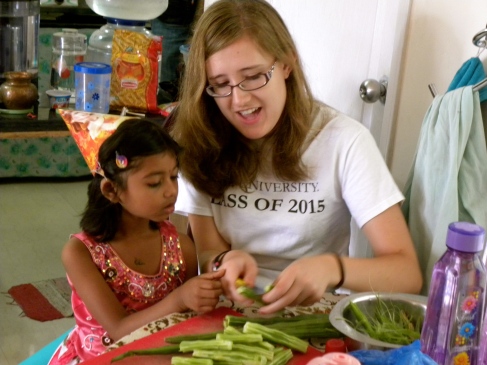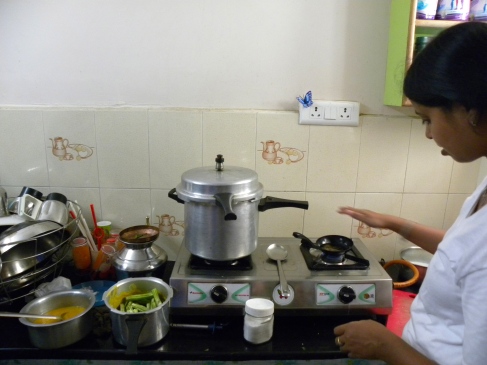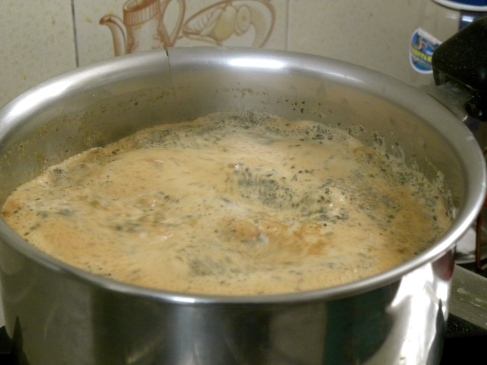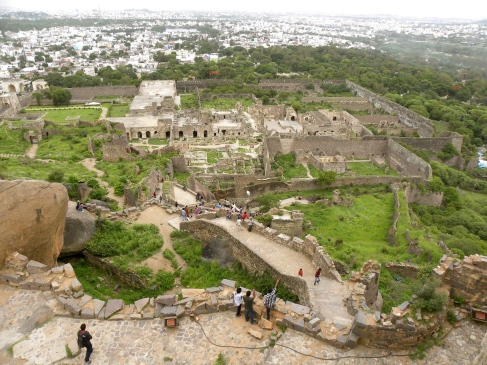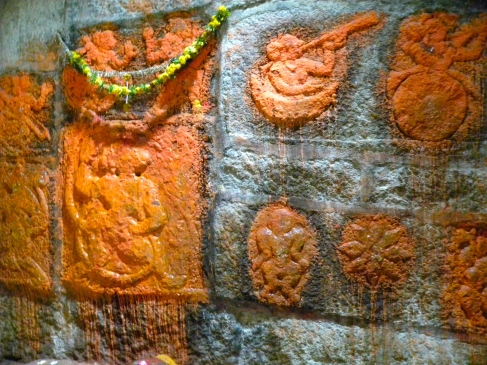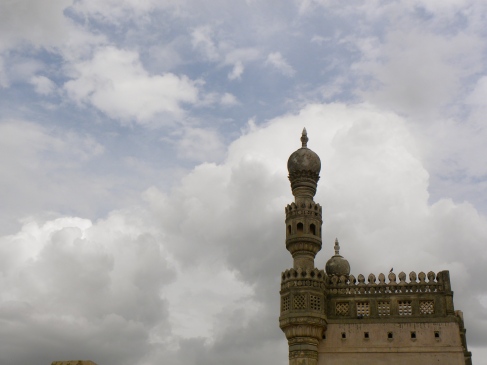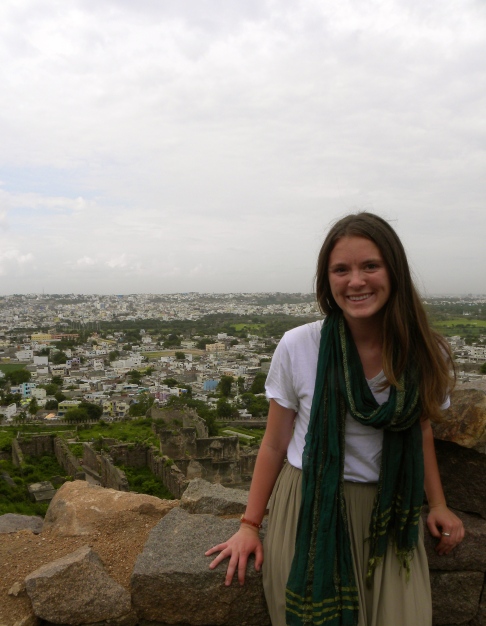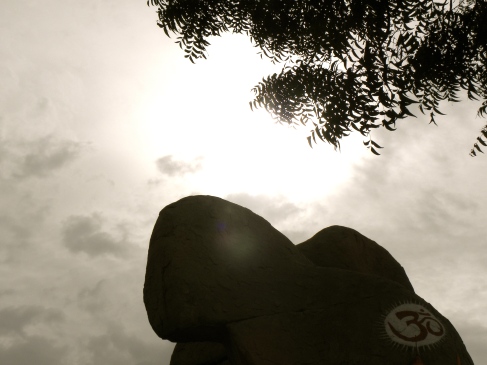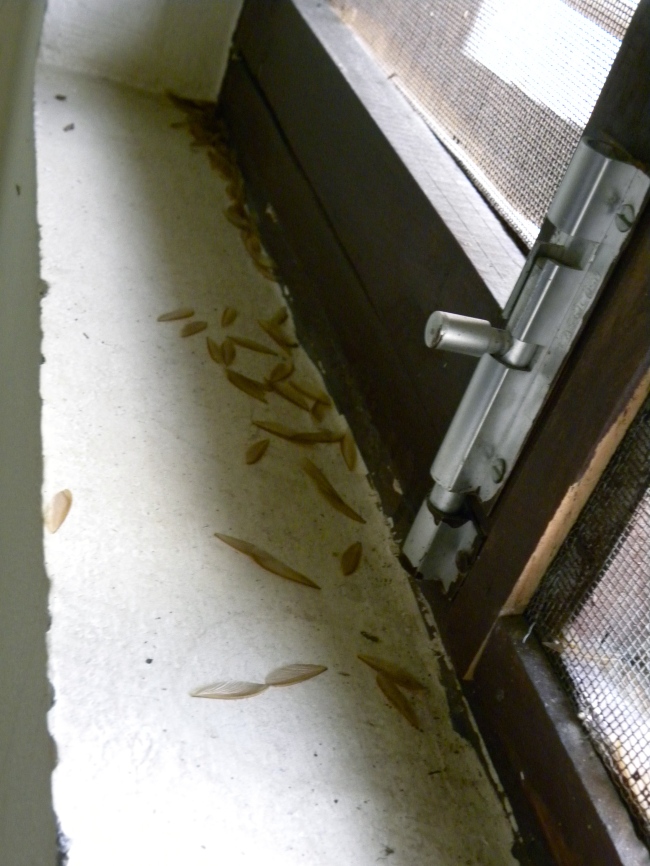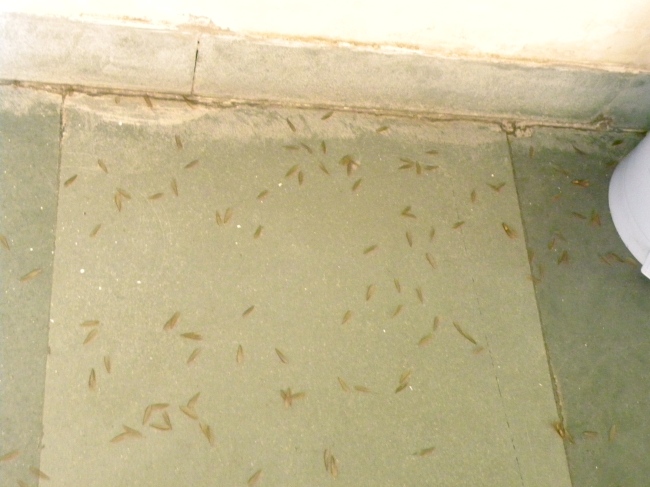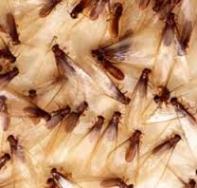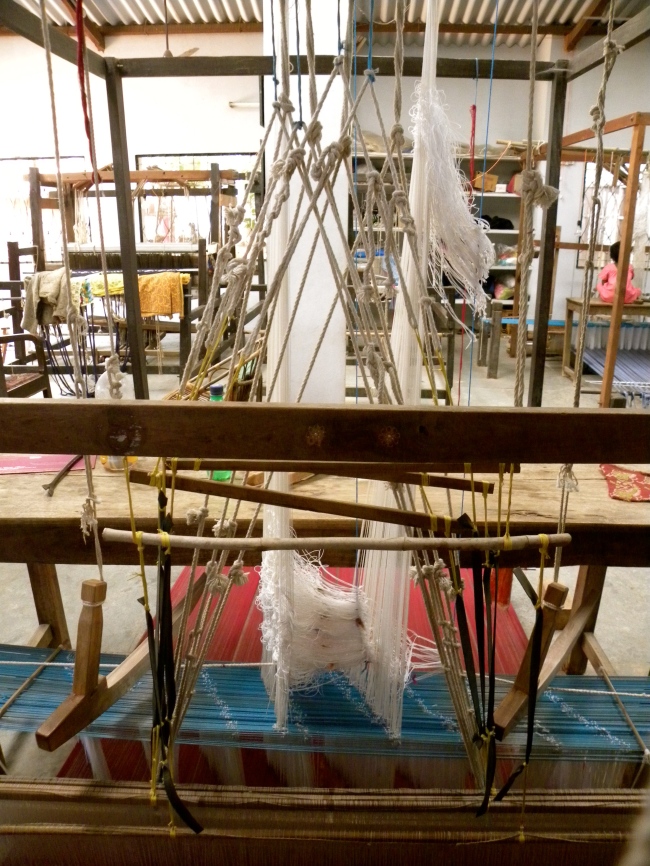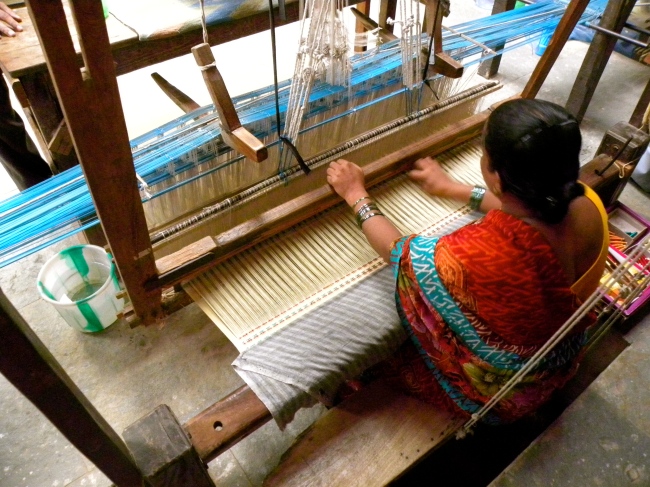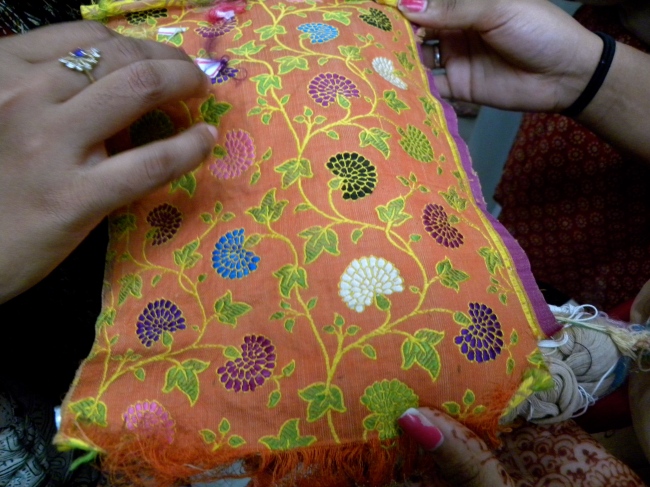It’s been a weekend of sightseeing and food adventures, one last chance to relax with no obligations before our volunteer work and lesson planning begins.
This giant Buddha monolith was put into the lake separating Hyderabad from Secunderabad in 1985. On the way out, Buddha fell off his boat and it took quite some time for them to retrieve him from the water. Luckily the boat hadn’t gotten very far, and now Buddha is safe and sound.
According to Bhavani, people in Hyderabad joke that if you want to commit suicide, all you need to do is drink the water in this lake. Ah, the wonderful sense of civic duty and environmental activism that exists here.
Bhavani was kind enough to welcome us into her home and teach us to cook tomato biryani. Those green vegetables are called drumsticks.
and that chai. you don’t even know.
At the top of Golkonda Fort, after climbing 380 uneven stone steps with no railings. The views of the city were well worth it, but I wish the Mughals had left this incredible fort on its own, instead of leaving it in ruins.
These were hand-carved–in the dark–by a prisoner who was kept in solitary confinement for years for building a temple using what was falsely believed to be stolen money.
I’m starting to love India. I knew that I would love the DukeEngage experience as a whole, because my group clicked from the start DukeEngage Academy, and the program’s focus on education policy and ethical engagement is so in line with my own interests. But I didn’t expect to love a place that I now associate with crowded buildings, dust, humidity, bugs, and the possibility of death while crossing the street. I’m starting to see a beauty to it all, though, a rhythm within the chaos. As we’re settling into a routine, and as landmarks are beginning to become more familiar, I’m starting to feel more at home.
That being said, there are certain aspects of Indian culture that I’m having a very difficult time adjusting to. Legally, there is no caste system in India anymore, and yet it is still highly pervasive socially. For example, DukeEngage has been generous enough to provide us with a personal driver 24/7 during our stay here, since public transportation is so dangerous. Our driver, Jagdish, is constantly finding ways to make us feel welcomed, buying us mangos a couple times a week, inviting us to his daughter’s birthday, even finding a pan shop that specially washed the pan leaves in mineral water for us. I feel like he’s as much a part of this experience as our Duke professors, or Bhavani, our cultural coordinator. So why is it that, when we eat dinner at Professor Prasad’s house, Jagdish must wait outside in the car? Of course, this is how having a driver works–it involves a lot of waiting, in order to be available, and this is, after all, his job. But this just doesn’t feel right to me: if someone is serving me so wholeheartedly and devotedly, I should not treat him or her as though he or she is lesser. Rather, it humbles me, and makes me aspire to be more like the one who is in the service role. Here, I’ve noticed that there is little thanks given to those in the service sector; in fact, there’s little acknowledgment at all. There is a separation, an invisible barrier that guards the upper class from having to deal intimately with the lower. And, again, maybe this isn’t accurate–this is merely what I’ve observed in my short time here. But I still can’t justify it.




